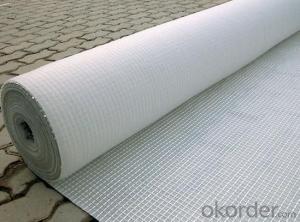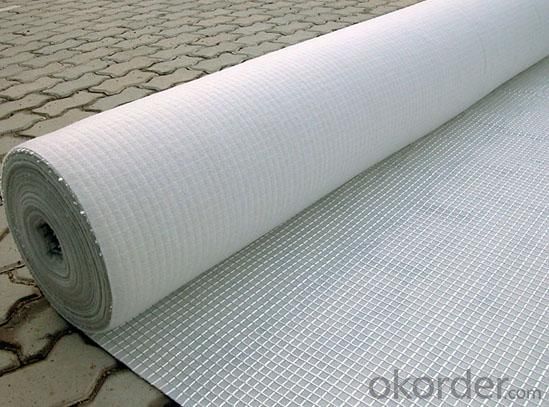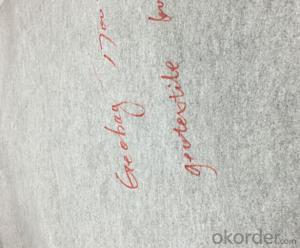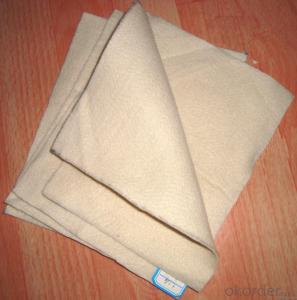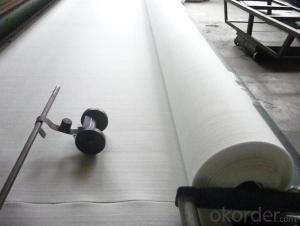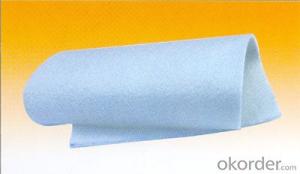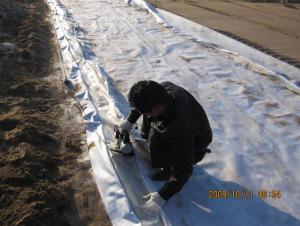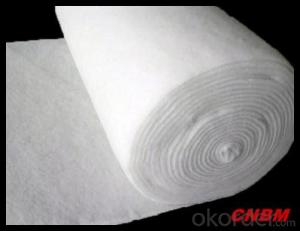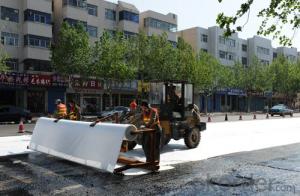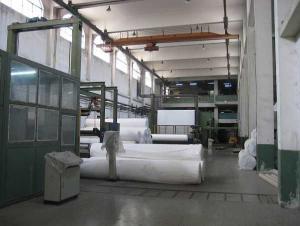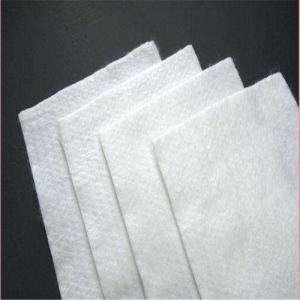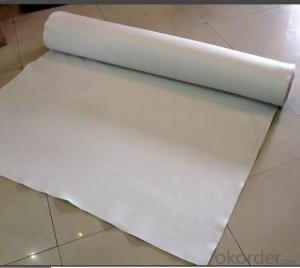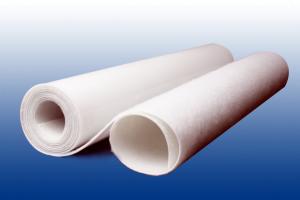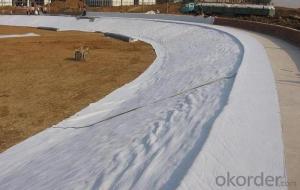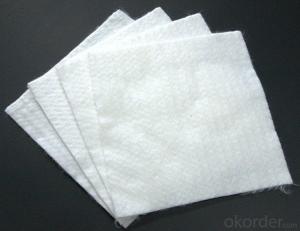A34 Punched Pet Quality Nonwoven Geotextile for Road Construction
- Loading Port:
- Qingdao
- Payment Terms:
- TT OR LC
- Min Order Qty:
- 10000 m²
- Supply Capability:
- 500000 m²/month
OKorder Service Pledge
OKorder Financial Service
You Might Also Like
Structure of High Tensile Punched Pet Quality Nonwoven Geotextile Description:
The filtration layer of the dykes, river canal, seacoast, concrete slope, retaining walls. At the same time of preventing the clay granule from passing, it allows the water and the gas pass through freely.
Main Features of the Punched Pet Quality Nonwoven Geotextile:
The isolation of the railway dregs and the roadbed, roadbed and the soft base, surface of the airdrome and parking lot and the groundsill, different dam materials. It isolates the soil and the gravel of two kinds different granule pathway from the groundsill or other buildings.
Water conservancy project and hydropower project
Road paving,railway
Airport and port
River bank protection and tunnel
Environmental protection, etc
Punched Pet Quality Nonwoven Geotextile Images
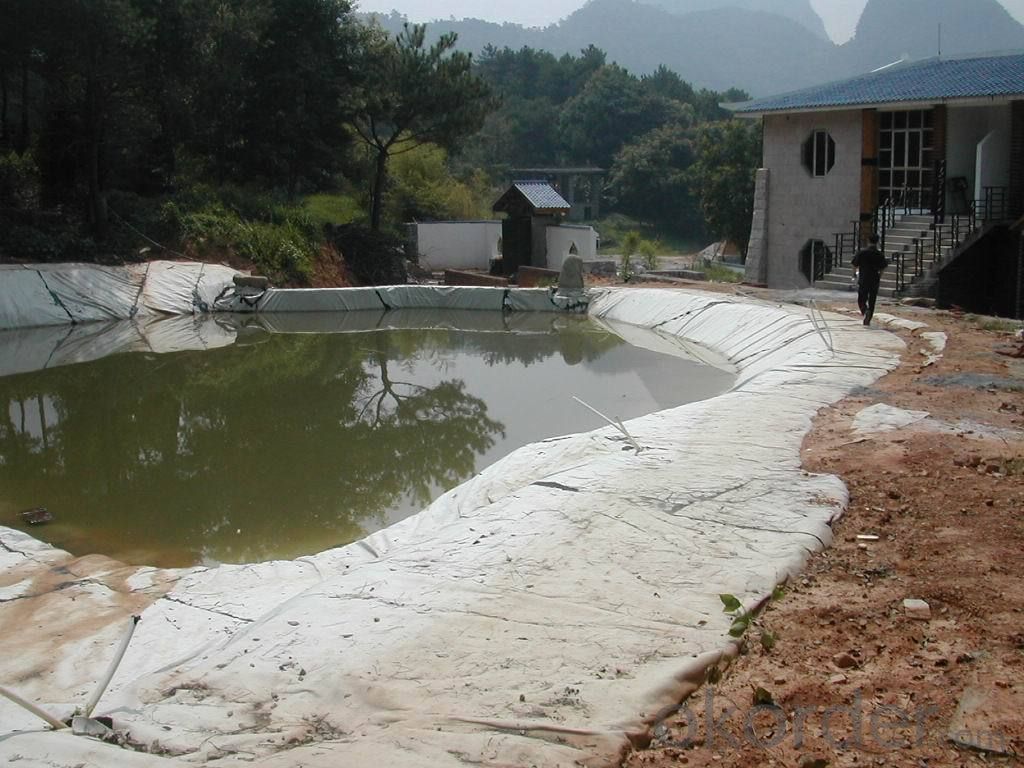
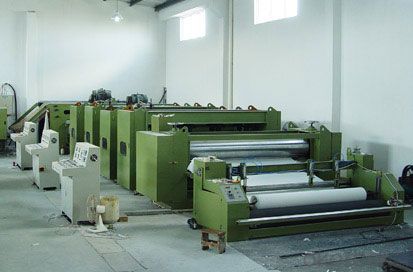
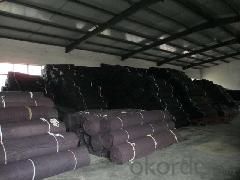
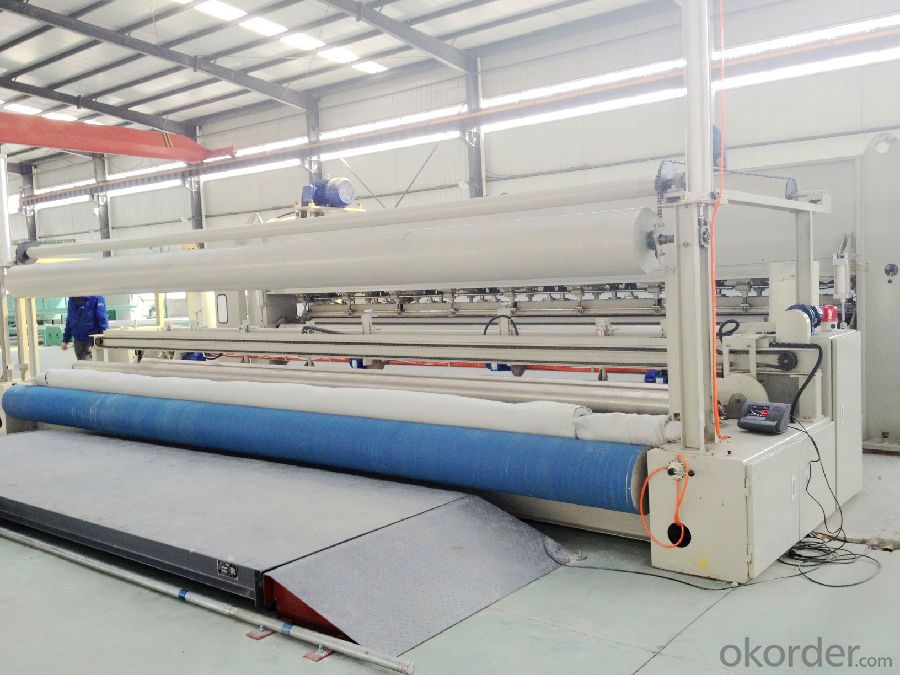
Punched Pet Quality Nonwoven Geotextile Specification:
No. | Specification(g/m2) | 100 | 150 | 200 | 250 | 300 | 350 | 400 | 450 | 500 | 600 | 700 | 800 | 1000 | Remark |
1 | Weight deviation, % | -8 | -8 | -8 | -8 | -7 | -7 | -7 | -7 | -6 | -6 | -6 | -6 | -6 | |
2 | Thickness, mm≥ | 0.9 | 1.3 | 1.7 | 2.1 | 2.4 | 2.7 | 3.0 | 3.3 | 3.6 | 4.1 | 4.5 | 5.0 | 5.8 | |
3 | Width deviation,% | -0.5 | |||||||||||||
4 | Breaking strength, KN/m ≥ | 2.5 | 4.5 | 6.5 | 8.0 | 9.5 | 11.0 | 12.5 | 14.0 | 16.0 | 19.0 | 22.0 | 25.0 | 31.0 | MD and CD |
5 | Breaking elongation,% | 25~100 | |||||||||||||
6 | CBR bursting strength, KN≥ | 0.3 | 0.6 | 0.9 | 1.2 | 1.5 | 1.8 | 2.1 | 2.4 | 2.7 | 3.2 | 3.7 | 4.0 | 5.0 | |
7 | Sieve Size O90 mm | 0.07~0.2 | |||||||||||||
8 | Vertical permeability coefficient, cm/s | Kx(10-1~10-3 ) | K=1.0 ~9.9 | ||||||||||||
9 | Tear strength, KN≥ | 0.08 | 0.12 | 0.16 | 0.20 | 0.24 | 0.28 | 0.33 | 0.38 | 0.42 | 0.46 | 0.53 | 0.60 | 0.75 | MD and CD |
FAQ
We have organized several common questions for our clients,may help you sincerely:
Q1: How about your company?
A1:Our company are one of the largest geosynthetic products supplier in the world.We have the products experience more than 20 years.Already export to USA/Germeny/Australia/Zambia/Brazil etc.more than 20 countries.Almost 10years.Our products including Geocell/Fiberglass Geogrid/Geomembrane/Geotextile/Geonet etc.
Q2.Does your products have good qualitity?
A2:Yes,we have do many big projects such as the 2008 Beijing Olympic BIRD NEST. Divert water from the south to the north project. And our products have CE certificate also.
Q3:How long can we receive the products after purchase?
A3:In the purchase of product within three working days, We will arrange the factory delivery as soon as possible. The pecific time of receiving is related to the state and position of customers.Commonly 15-20 working days can be delivery.
- Q: What are the long-term performance expectations for geotextile installations?
- The long-term performance expectations for geotextile installations are generally high. Geotextiles are designed to provide durable and effective solutions for various applications such as soil stabilization, erosion control, and drainage systems. With proper installation and maintenance, geotextiles can typically last for decades, providing long-lasting functionality and performance. However, specific performance expectations may vary depending on factors such as the type of geotextile, site conditions, and the intended application.
- Q: How do geotextiles contribute to soil remediation?
- Geotextiles contribute to soil remediation by acting as a barrier or filter to control erosion, retain sediment, and stabilize the soil. They help to prevent the spread of contaminants, regulate water flow, and enhance the effectiveness of other remediation techniques such as soil vapor extraction or bioremediation.
- Q: What are the specifications for geotextiles used in erosion control tubes?
- The specifications for geotextiles used in erosion control tubes vary depending on the specific requirements of the project. However, common specifications include material type (typically woven or non-woven), tensile strength, permeability, UV resistance, and durability. The geotextiles should be able to retain soil particles while allowing water to pass through, effectively preventing erosion.
- Q: Is the polyester nonwoven fabric geotextile?
- Not geotextile. Polyester non-woven fabrics: mainly used for construction, roof waterproof as a base cloth, attached to the above sand, cement, etc., to prevent the role of sand leakage. Nonwovens are often used in construction and are a measure to prevent cracks. Geotextile manufacturers, for your answer
- Q: How are geotextiles used in landfills?
- Geotextiles are used in landfills to help enhance the stability, drainage, and filtration of the waste disposal site. They are typically placed between the layers of soil and the landfill liner system to prevent soil erosion, control gas and liquid migration, and provide reinforcement for the overall structure.
- Q: How are geotextiles affected by temperature variations?
- Geotextiles are generally resistant to temperature variations and can withstand a wide range of temperatures without significant impact on their performance. However, extreme temperature fluctuations, especially rapid changes, can potentially cause expansion or contraction of the geotextile material. This may lead to changes in its physical properties, such as reduced tensile strength or altered permeability. Overall, while temperature variations can have some effect on geotextiles, it is typically minimal and does not compromise their functionality significantly.
- Q: 250 grams of two cloth a film 0.8 thick geotextile what price
- 250 grams of two cloth a film 0.8 thick geotextile per square meter between about 10 yuan -13 yuan, the current price is the lowest in recent years.
- Q: What are the maintenance requirements for geotextile-reinforced retaining walls?
- The maintenance requirements for geotextile-reinforced retaining walls typically include regular inspections to check for any signs of damage, erosion, or settlement. Additionally, it is important to ensure that the drainage system is functioning properly to prevent water accumulation behind the wall. Any necessary repairs or adjustments should be promptly addressed to maintain the structural integrity of the retaining wall.
- Q: What are the advantages of using geotextiles?
- Geotextiles offer several advantages in various applications. Firstly, they enhance soil stability by providing reinforcement and preventing erosion. They also aid in filtration by allowing water to pass through while retaining fine particles, thus improving water quality. Geotextiles can also be used in drainage systems to facilitate the flow of water and prevent clogging. Additionally, they help in separation, preventing the mixing of different types of soils or materials. Geotextiles are durable and resistant to degradation, making them a cost-effective solution with a long lifespan. Overall, geotextiles provide numerous benefits in infrastructure projects, environmental protection, and soil management.
- Q: What are the factors to consider when designing geotextile-reinforced slopes?
- When designing geotextile-reinforced slopes, several factors need to be considered. These factors include the type and strength of the soil, the slope angle, the water conditions, the expected load and stress on the slope, the desired vegetation cover, and the available space for construction. Additionally, the design should account for the potential for erosion and the need for drainage to prevent water buildup. The selection of appropriate geotextile materials and installation techniques is also crucial for ensuring long-term stability and effectiveness of the reinforced slope.
Send your message to us
A34 Punched Pet Quality Nonwoven Geotextile for Road Construction
- Loading Port:
- Qingdao
- Payment Terms:
- TT OR LC
- Min Order Qty:
- 10000 m²
- Supply Capability:
- 500000 m²/month
OKorder Service Pledge
OKorder Financial Service
Similar products
Hot products
Hot Searches
Related keywords
